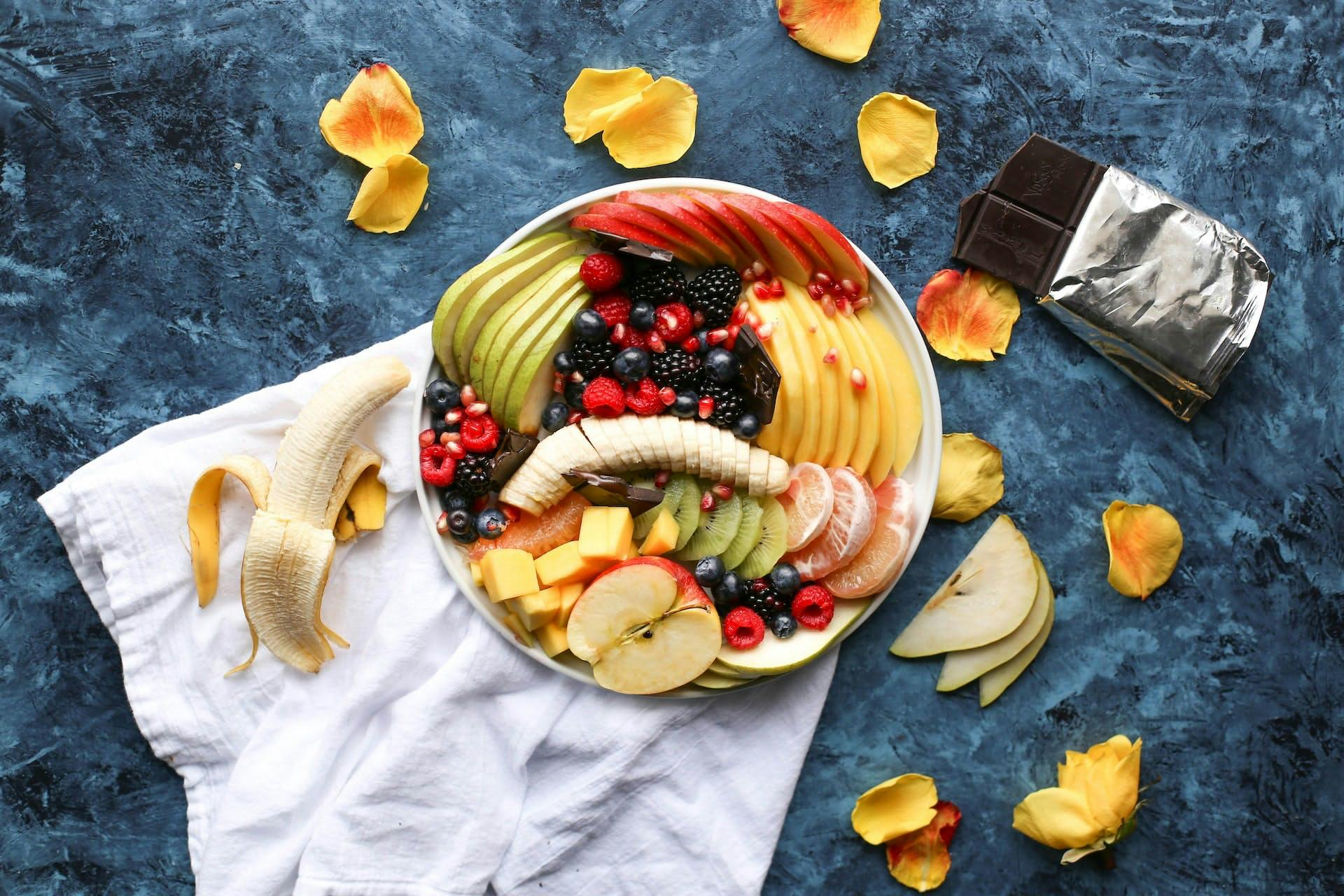This is our first blog in a series dubbed “Food Sick.” This series is Veri’s investigation into our metabolic health crises, why Big Food might be a source of the problem, and what you can do about it.
The food industry can be confusing and misleading, especially when it comes to natural sugars vs. added sugar. High-fructose corn syrup (HFCS), a type of man-made sugar that is added to foods and does not occur naturally, is comprised of fructose and glucose.
HFCS is found in most food and beverages sold today due to its cost-effectiveness and sweetness level. Although a little sugar here and there doesn’t hurt, high-fructose corn syrup is hidden in many products. Long-term consumption could lead to unwanted metabolic distress and disruption of your internal hunger cues.
What is high-fructose corn syrup?
High-fructose corn syrup has been contributing to our current metabolic health crisis since its introduction to the food and beverage industry in the 1970s [1].
It’s not formed naturally: the process starts with corn milled down to corn starch. Corn starch is further broken down (or hydrolyzed) into corn syrup (which contains 100% glucose) by heating it with a dilute acid or by combining it with enzymes [2]. Glucose syrup is sometimes used interchangeably with corn syrup; however, this is made from the breakdown of starch like wheat, potatoes, or rice.
Since glucose isn’t sweet enough to satisfy the average person’s growing sweet tooth, manufacturers use enzymes and acids to convert some of the glucose from corn syrup into fructose, which is significantly sweeter. At two years old, an American is less likely to consume a fruit or vegetable on a given day than a manufactured sweet [3]. By three years old, most children consume at least one sugar-sweetened beverage per day.
The food industry is feeding this increase in sweet preference by increasing the sale of potentially addictive products with added sugars, like HFCS [4].
There are many variations of HFCS comprised of glucose and fructose in different concentrations, with the most common being either 42% or 55% of fructose, which the industry refers to as HFCS 42 or HFCS 55, respectively [1, 5, 6, 7]. HFCS 42 is primarily found in processed foods, cereals, and baked goods, whereas HFCS 55 is mainly found in soft drinks.
Why is high-fructose corn syrup in everything?
HFCS is the main source of fructose in the US diet [1]. Its prevalence in modern-day foods and drinks has been on the rise over the past five decades, notably due to cost-effectiveness and versatility.
In fact, producing HFCS is 10-30% cheaper than sugar (sucrose), while offering comparable sweetness and flavor [8, 9]. (Taxes on sugar imports and subsidies on corn crops allowed for HFCS to be a cheaper sweetener than sucrose [2].)
HFCS has improved stability and functionality compared to sucrose, particularly in acidic foods and beverages — its liquid form allows it to be easily pumped from delivery vehicles to storage to mixing tanks, requiring only simple dilution before use.
So not only does the addition of HFCS improve taste, but it’s shelf stable, which allows acidic foods like ketchup, peanut butter, and cold cuts to sustain their freshness and sweetness.
What are the health risks of high-fructose corn syrup?
There’s a bit of controversy surrounding the relationship between HFCS and obesity [1, 5].
Although HFCS consumption has increased in parallel with increasing body weights and rates of obesity, science hasn’t reached an agreeable conclusion yet [7]. Studies have found opposing results when examining the relationship between sugar intake and body weight — some found a positive association, whereas others found an inverse correlation [10].
These conflicting results could be due to differences in study design, participants, type of sweeteners, and other contributing factors. However, what we do know is that overall added sugar intake, including HFCS, can have undesired impacts on our metabolic flexibility, blood sugar, and insulin sensitivity.
The impact of HFCS on glycemic index
When we eat carbohydrates, our body breaks them down into glucose for immediate energy or to store for later (i.e., glycogen). In response to glucose in the body, the pancreas releases the hormone insulin. Insulin acts as a “key” to allow glucose into the cells to be converted into energy.
Our glucose spikes from consuming a lot of HFCS, and over time high glucose leads to insulin resistance.
The glycemic index (GI) is a rating system for carbohydrate-containing food, where the score (0-100) represents how fast the food in isolation affects your blood sugar.
HFCS’ GI is 87 and sucrose’s GI is 60 [11]. A short-term study that compared consumption of beverages sweetened with fructose, glucose, HFCS, and sucrose showed that beverages sweetened with HFCS and sucrose increase post-meal triglyceride levels (a type of fat that’s found in your blood) to a similar extent as 100% fructose alone [12].
Multiple studies have shown that acute metabolic effects of HFCS and sucrose consumption at 30% of energy on circulating glucose, insulin, leptin, and ghrelin are essentially identical when compared in both men and women at a normal weight and overweight [13].
Glucose and fructose, the two components of HFCS, are naturally found in many foods and are important for our health. It’s when these sugars are added to food and beverage products that problems may arise.
Overconsumption of fructose has been shown to lead to liver damage, heart disease, and diabetes [14, 15, 16]. Fructose is also associated with insufficient secretion of insulin and leptin and suppression of ghrelin [5]. Leptin and ghrelin are the hormones that regulate your hunger, where leptin tells you when you’re full and ghrelin tells you when you’re hungry.
Compared to glucose, fructose is passively absorbed further down the small intestine and doesn’t stimulate insulin secretion. Insulin-mediated glucose uptake and metabolism in adipose tissue play a key regulatory role in leptin concentrations [5]. With fructose, leptin can’t do its job of helping you feel full.
How do you spot high-fructose corn syrup on labels?
Food and beverage companies aren’t looking out for our health — they want you to buy their products no matter the health costs. They’ve learned ways to essentially cheat around nutrition and ingredient labels, and use other names to disguise HFCS. During your next trip to the grocery store, be on alert for any of these ingredients listed as they are the same thing as HFCS:
- Glucose syrup
- Corn syrup
- Isoglucose
- Tapioca syrup
- Crystalline fructose
Another tip is that food manufacturers are required to list all ingredients in the food on the label [17]. The ingredients are listed in descending order by weight, meaning that the product contains the largest quantities of the first few ingredients.
So if you want to minimize your HFCS intake, pay attention to the above names, and if the food does contain a form of HFCS, make sure it’s towards the end of the ingredient list.
HFCS is found in many forms and in many products. As you walk through the aisles of the grocery store, it can be overwhelming to try to make a healthy choice. Instead of processed foods that contain HFCS, try to incorporate more color into your cart from fruits and vegetables.
Here are some easy swaps for common foods that contain HFCS:
- Instead of soda, try sparkling water with lemon or fruit.
- Instead of sweetened juices, try 100% juice, with no added sugars and minimal fruit.
- Instead of granola and nutrition bars, try raw nuts and whole fruits.
- Instead of processed crackers, try popcorn.
- Instead of processed/white bread, try whole-grain bread.
Key Takeaways
At Veri, we support food freedom and having a flexible, balanced lifestyle that supports your health and happiness. That’s why it’s not the end of the world if you have foods and beverages that contain HFCS now and again. However, by being aware of this information, you’re empowered to make choices that will make you feel your best and not be persuaded by common misguided notions of health and wellness.
- High fructose corn syrup is a sweetener derived from corn and has many attractive qualities for the producer like stability, cost-effectiveness, and sweetness level. It contains about 45% glucose and 55% fructose.
- Overconsumption of added sugars, like HFCS, has been linked to disruptions in internal hunger cues, insulin sensitivity, and blood sugar.
- There is a wide range of products that contain HFCS and other names that manufacturers use to trick you, the consumer — pay attention to them and where they fall on the ingredients list.
- It’s okay to consume these products every once in a while. As a consumer, you should have ALL the information you need to make a choice that is best for you.
References:
- https://pubmed.ncbi.nlm.nih.gov/15051594/
- https://www.britannica.com/video/186965/differences-sugar-corn-syrup
- https://www.ncbi.nlm.nih.gov/pmc/articles/PMC5033729/
- https://www.cambridge.org/core/journals/public-health-nutrition/article/global-trends-in-added-sugars-and-nonnutritive-sweetener-use-in-the-packaged-food-supply-drivers-and-implications-for-public-health/A6375EB569DCDA4899730EC40C69D1CC
- https://pubmed.ncbi.nlm.nih.gov/19064539/
- https://www.fda.gov/food/food-additives-petitions/high-fructose-corn-syrup-questions-and-answers
- https://www.ncbi.nlm.nih.gov/pmc/articles/PMC5747444/
- https://www.tandfonline.com/doi/full/10.1080/15140326.2021.2016350
- https://www.worldofmolecules.com/3D/what-is-the-difference-between-sucrose-and-fructose.html
- https://academic.oup.com/ajcn/article/88/6/1738S/4617109?login=false .
- https://www.diffen.com/difference/High_Fructose_Corn_Syrup_vs_Sugar
- https://academic.oup.com/ajcn/article/88/6/1733S/4754452?login=false#111232647
- https://www.sciencedirect.com/science/article/pii/S027153171300184X?via%3Dihub
- https://pubmed.ncbi.nlm.nih.gov/15983189/
- https://pubmed.ncbi.nlm.nih.gov/17190309/
- https://www.ncbi.nlm.nih.gov/pmc/articles/PMC4892884/
- https://www.fda.gov/food/food-ingredients-packaging/overview-food-ingredients-additives-colors#qalabel

